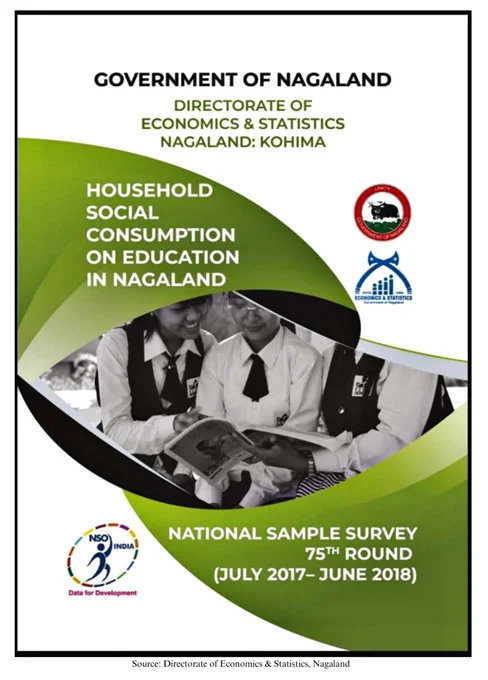The National Sample Surveys (NSS) 75th Round report was published by the Directorate of Economics and Statistics (DES), Nagaland today.
The present NSS 75th Round report presents key State level parameters on Health and Education in Nagaland pertaining to the period of July 2017 – June 2018.
Household Social Consumption on Health in Nagaland
The National Sample Survey on Household Social Consumption related to Health forms a vital source of primary data on the subject for the State and the country as a whole. The survey gathers basic information on the health sector like morbidity, profile of ailments including treatment, role of Government and private facilities in providing health care, expenditure on medicines, medical consultation, investigation, hospitalization and expenditure thereon, maternity and childbirth, the condition of the aged, etc.
Some of the key findings of the survey are:
- About 6% of the rural population and nearly 5% of the urban population reported as ailing during a 15-day reference period.
- ‘Infection’ was the most prevalent ailment among both genders in both rural (48 per 1000 persons) and urban (29 per 1000 persons) sectors.
- 83% of ailments in rural areas and 66% in urban areas were treated at Government/Public hospitals.
- 85% of women received pre-natal care and 76% received post-natal care in both rural and urban areas.
- 55% of the aged population (60 years & above) in rural areas and 72% in urban areas were economically independent.
- 100% of children aged 0-5 years in rural areas and 99% in urban areas had received some vaccination.
Household Social Consumption on Education in Nagaland
The National Sample Survey on Household Social Consumption related to Education is the primary source of data for generating various indicators on education like level of education, attendance, incentives received by the students, expenditure on education, etc. These are used in decision support, policy inferences and analysis.
Some of the key findings of the survey are:
- Estimated male population between age 3 to 35 years was 4,01,000 (3,04,000 in rural & 97,000 in urban) while that of female was 3,31,000 (2,51,000 in rural & 80,000 in urban)
- Nearly 87% of households in rural areas and 73% of households in urban areas reported availability of primary school within 1 km from the house.
- 4% of persons aged 15 years and above were ‘not literate’ while 14.2% were literate up to Primary level and 15.2% were Graduate and above.
- Nearly 64% of males and 54% of females in the age group 3-35 years were currently attending education.
National Sample Surveys
National Sample Surveys are large scale sample surveys on various socio-economic subjects conducted perennially by the National Statistical Office (NSO) since its inception in 1950. The Directorate of Economics and Statistics (DES), Nagaland has been participating in this nation-wide survey since 1972.


